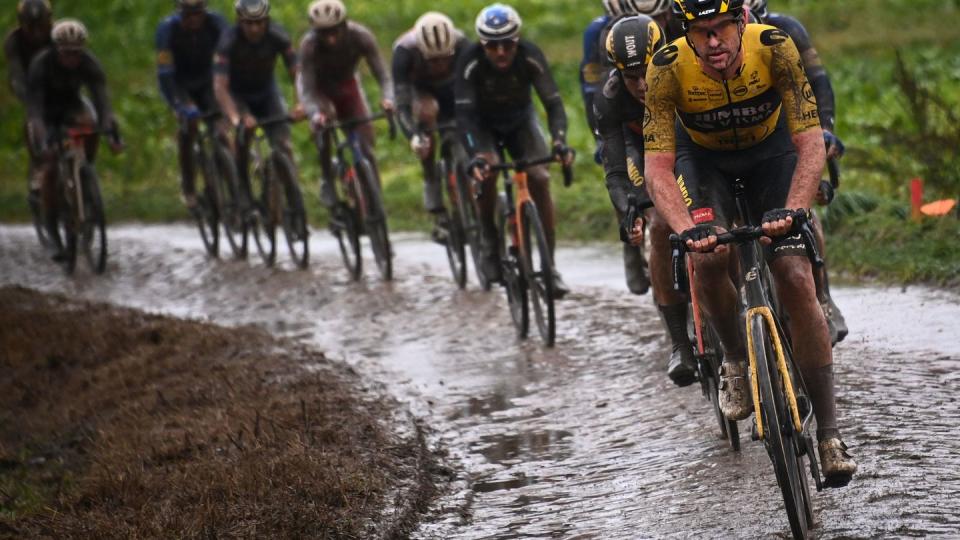Teams Roll Back High-Tech Tire Pressure Control and Embrace Old-School Tactics for Paris-Roubaix

Paris-Roubaix is the kind of cobbled classic that calls to mind cyclocross season. And the question of ‘What tire pressure are you running?’ seems more important than pretty much anything else.
The Hell of the North’s chunky cobbles, slick gravel segments, and high odds of ending up in a ditch make for difficult tire choices and tire pressure decisions. Last year, some teams teased a new high-tech concept: What if, instead of deciding on one pressure to run, they were able to dial it in during the race, adding and subtracting valuable PSI depending on the course conditions?
It turns out that the technology does exist—but this year, big teams like Visma-Lease a Bike are not risking it and are going old-school instead.
Wireless Tire Pressure Control Technology
In 2023, the team then called Jumbo Visma and Team DSM, debuted wireless tire pressure control technology at Paris-Roubaix. According to the Dutch website Wielerfliets, Visma went with HubTech’s Kinetic Air Pressure System (KAPS). This system works by using an in-hub pump with an electro-pneumatic system that controls the activation of the pump on demand, allowing riders to add or subtract air in their tires as needed.
“We always try to find new things, and it’s a huge innovation,” Wout Van Aert said last year ahead of the race. “If you can have lower pressure on the cobbles and still have the normal pressure you’re used to on the tarmac, it’s a big-big benefit for all the accelerations in between.”
While we did see riders like Christophe Laporte sporting the tire technology, despite rumors, Van Aert was not using KAPS when he suffered a late-race flat that hindered his efforts against Mathieu Van der Poel. Sadly, Paris-Roubaix will miss Van Aert this year regardless of tire pressure debates, as he’s currently injured after a nasty crash last week at Dwars door Vlaanderen.
Between the added weight from a system like that and the hectic handling that causes crash after crash at Paris-Roubaix every year, it likely makes sense that teams are opting for a more old-school approach that keeps riders focused on keeping the bike upright and not making minor pressure adjustments heading into sketchy sections.
Skepticism from Riders
Riders have been dubious about tire pressure tech since its inception. Team DSM almost used a similar setup from Scope in 2022, but at the last minute, opted against it. “Paris-Roubaix is one of the most chaotic races on the calendar and requires full focus from the riders over the entire 259-kilometer distance. For that reason, riders must be completely at one with their bike and be able to intuitively control all components,” they said at the time, according to Wielerfliets. They did use it in 2023, but after last year’s race, neither DSM nor Jumbo Visma was overly effusive in their praise of the systems—in fact, there was no mention of whether the KAPS or Scope helped the teams.
This year, DSM hasn’t commented on whether they’ll use similar tech for Paris-Roubaix, but GCN reports that the team hasn’t been using it in any of the other cobbled races, so it’s unlikely.
According to GCN, Visma-Lease-a-Bike said they wouldn’t use the technology in the race again this year. “We have been working together [with KAPS] since last year, and they are finalizing the product now with our combined data. So not yet now, but soon available, as they will produce on a larger scale later this year for the consumer market.”
That’s potentially good news for anyone interested in testing the technology for their own road/gravel adventures! Meanwhile, we’ll be watching and listening to find out what tires Paris-Roubaix racers are opting for and, of course, what pressure they’re running.
You Might Also Like

